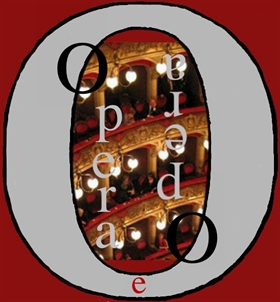Edited by Dalila Calisolo —
October 13, 2015 to 31 January 2016 to the Philharmonie de Paris –
As violins in the paintings of Chagall! The instrument is part of her family history: he was born in July 1887 in a Hasidic Jewish family of Vitebsk in Belarus, his brother plays the mandolin and uncle of the violin. In the Hasidic tradition – a current advocating the revival of Judaism – music, dance and trance are routes of access to the divine. Some figures of his youth will erect in archetypes and populate his paintings, so the festive Orchestra klezmer (musical tradition of Ashkenazi Jews), the bird, symbol of inspiration, or the violinist who is the wandering Jew.

© Jacques Demarthon / AFP
Outstanding feature to enjoy l ceiling ’ Opera Garnier
Exposure to the Philharmonic begins with an entire room dedicated to the ceiling of the Paris Opera commissioned in 1963 by the Minister of Culture André Malraux, and then back time to the years of youth in Vitebsk.
A reverse chronology which can confuse, but due to ceiling height needed for a unique film: thanks to a drone, the details of the ceiling of the Opera House inaugurated in 1964 have been digitized in high definition by Google. Mounted travelling, image zoom on the canvas painted in tribute to the musical pantheon personal artist, either 14 composers, and accompanied it by the corresponding music: Carmen to Bizet, the Magic Flute Mozart etc.
In parallel, many unpublished sketches of the project step by step render the genesis of creation and the different stages of his creative process.
The sets and costumes for l ’ opera
Marc Chagall has manufactured many sets and costumes for the opera. Among the 270 artworks (paintings, drawings, sculptures, ceramics and costumes), several dozen are sumptuous costumes on loan from the Metropolitan Opera in New York for “L ’ Firebird” et “The Magic Flute”, but also by the Paris Opera for “Daphnis and Chloe”.

© Jacques Demarthon / AFP
L ’ huge billboard “The triumph of music”
In the 1960s, Chagall devoted himself to carrying out major decorative projects. In a gesture of reconciliation, he, the Jew who had to leave occupied France for New York, created a large panel for the foyer of the Frankfurt Theater, “Commedia dell ’ arte”. In New York, he created two huge panels in 1966 for the Lincoln Center, “The triumph of music” et “Sources”, which give their name in two exhibitions organized in parallel this fall, the Philharmonie and the Roubaix swimming pool (24 October-31 January).
“The Chagall box”Ode to the dance and music
The exhibition closes with decorative panels made by Chagall in 1920 for the Jewish Art Theater of Moscow, at the time an instrument of affirmation of yiddish culture in Russia. The decorations, dubbed “the Chagall box “are a hymn stained with dance, music and yiddish culture. They miraculously escaped the terror Stalin, entering in 1949 under a wrong title in the collections of the National Gallery Tretyakov in Moscow.
Scientific Commissioner: Amber Gauthier
Music Director: Mikhail Rudy
Marc Chagall: the triumph of music
October 13, 2015 to 31 January 2016
Paris Philharmonic
Parc de La Villette
SOURCE AND PHOTOS Philharmonic Orchestra of PARIS, ALLROVI, © Jacques Demarthon / AFP


